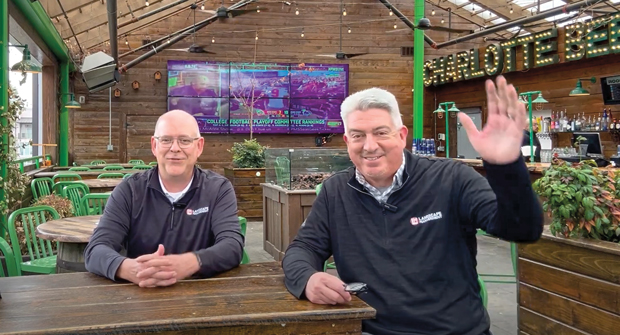
My family loves watching the Syfy Network show “Strange Evidence.”
The premise is simple: With so many cameras around in the world today, weird stuff is going to get caught on camera. Like the guy who got struck by lightning … twice! Or the creepy statue at an old museum that spins around all on its own.
The show is clever in that it keeps you watching through each commercial break, hopeful they’ll solve the mystery in the next segment (they rarely do.) Sure, some of the footage is dubious, but the show is always entertaining.
The prevalence of cameras today has changed the way we live our lives and do our jobs. For this month’s “Five Questions” I asked Bob Grover, president of Pacific Landscape Management in Hillsboro, Ore., what his favorite tool is to get the job done. His answer: a camera, especially those cameras everyone carries in their pockets that double as phones.
This got us to talking about just how much the cell phone camera has changed the way we do our jobs.
For a little over 20 years I’ve been a journalist. I remember early in my career, the odds of getting good photos from a source were low. If people even had photos at all, they would have to physically mail them to you, and because they were shooting with film, the options were few and it was unlikely they got a good photo.
Now? Sources usually text me the photos of any given project or person, and I have them instantly.
For Bob, camera phones have changed his job in a different way. He told me he uses the camera as a selling tool. If he sees a great combination of flowers, he grabs his phone and takes a photo. It’s an informal selling tool, he told me — something he can easily show customers or coworkers.
I spoke with Tom Kessler of Kessler Photography recently, about the value of having good photos of your work. Kessler’s skill behind the camera is in heavy demand; in 2018 alone, his job took him to projects in 35 different states. Granted, Kessler is doing work on a higher level than with a simple camera phone, but he knows the value of great photography in our business.
“Their work is important to show and market,” Kessler told me. “If you have shoddy photography, it’s like having a dirty house and you’re a house cleaner, or showing up in a beater car when you’re a car salesman. You want to show the best you can with your projects … that’s what going to sell when you’re sitting across the table from someone who might be willing to spend $5,000 to $10,000. If you have a dynamite portfolio, it’s going to prove that you can pull the job off.”
I like to think that every issue of Landscape Management is full of great photography, starting with our front cover and ending with the back cover. Some of it is professionally shot and some of it is hastily shot on a smartphone, but the work always shines through. Part of the fun of working on a magazine like this is the potential for beautiful photography.
Keep us in mind when you’re out on the job site. If you see something great, nab a photo of it and send it our way, to us directly or even through social media. We love to share with the world the fruits of the labors of our readers.
The TV show “Strange Evidence” has taught my family that cameras really are everywhere. This is a good thing, not just for a silly TV show, but also to document the great work people are doing each and every day in our industry.
Perhaps we are all part of this new reality show, but instead of “Strange Evidence,” I’ll call it “Great Evidence.”

